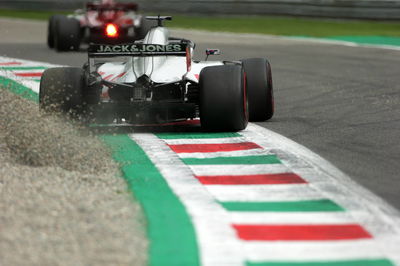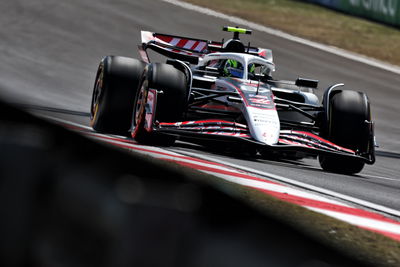Haas “50-50” on Grosjean DSQ overturn, hearing early November
Haas team principal Guenther Steiner has explained the events which led to Romain Grosjean’s disqualification from the Italian Grand Prix on a technical infringement, with the court hearing set to be reviewed in early November.
Grosjean lost his sixth place at Monza following a protest launched by Renault after the Italian race on the US squad’s modified floor design – which saw the French manufacturer move back ahead in the Formula 1 world constructors’ championship.

Haas team principal Guenther Steiner has explained the events which led to Romain Grosjean’s disqualification from the Italian Grand Prix on a technical infringement, with the court hearing set to be reviewed in early November.
Grosjean lost his sixth place at Monza following a protest launched by Renault after the Italian race on the US squad’s modified floor design – which saw the French manufacturer move back ahead in the Formula 1 world constructors’ championship.
An investigation by the race stewards declared Grosjean’s T-tray on his floor did not align with FIA rules of having a 50mm radius when viewed from below.
After initially lodging its intent to appeal following the Italian GP, the formal Haas appeal was confirmed last week with a court hearing in Paris set for “early November”, according to Steiner, with a final decision to be confirmed before the end of the current F1 campaign.
While Steiner was eager to avoid going into the detailed technicalities of the appeal he feels the decision ‘could go both ways’.
“I don’t want to go into technicalities because it will have less effect in the court of appeal,” Steiner said. “So it’s not my best chance to go there and bring our case on how it developed and how we think the stewards came to the wrong conclusion.
“It’s 50-50, it could go both ways. I would never say I am confident of winning it because you never know what is happening. We have no control on the decision, you can do the best you can with your lawyers and your technical people to explain what actually happened, the whole process and why we ended up where we were and why they got it wrong.”
Steiner is adamant the technical infringement picked up by the race stewards had no direct impact on Grosjean’s car performance and sees the ‘ambiguous’ rule as the key issue.
The US team had already been aware of the issue but were unable to make changes to the parts in time following the F1 summer shutdown.
“This is not a performance thing, this is just an ambiguous technicality,” Steiner explained. “It’s a mix of taking regulations, interpretation, ambiguity, information, it’s very complex.
“I think the stewards didn’t understand what we tried to explain. They disqualified us but at the court of appeal they have a better understanding and more time for us to explain how it went down.
“As we don’t have our own composite shop, we have to composite externally and rely on our suppliers. It is a small change but you need to do it properly. These cars are very sophisticated and it’s not like the old days when you can take it off with a file or a grinder.”
Steiner has also questioned Renault’s tactics by appealing after the race, when Grosjean secured enough points to see Haas overhaul Renault in the F1 standings, but ultimately accepts its ploy as part of the tough midfield competition.
“Renault’s decision was one they needed to make sure they are not overtaken for fourth position,” he said. “I think they thought that they need to do something otherwise they finish fifth. They can say if this is not fixed, we are going to protest you. Renault did what it need to do, but I think a lot of people have questioned it internally and they are right to.”











